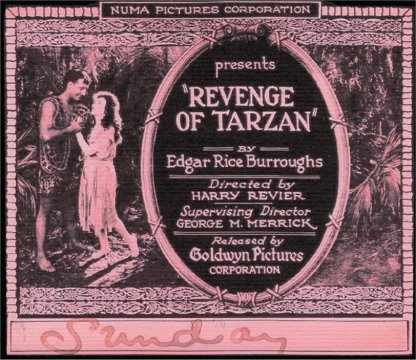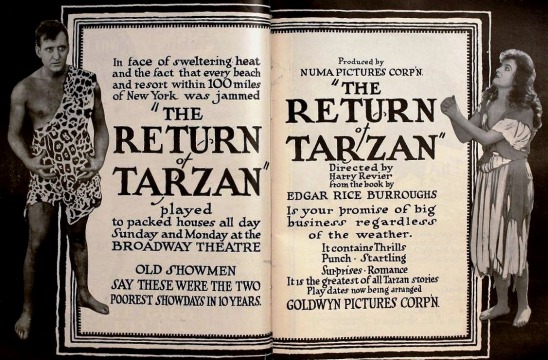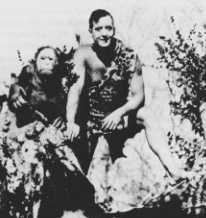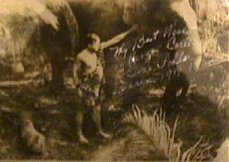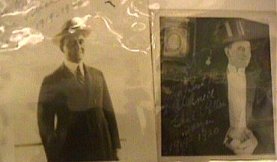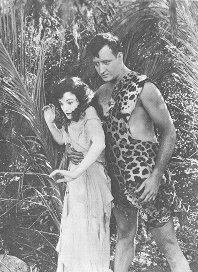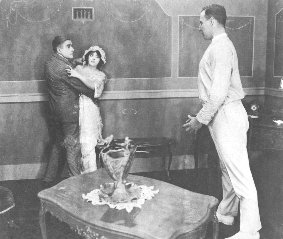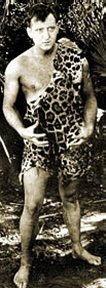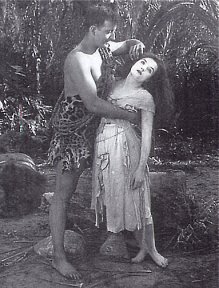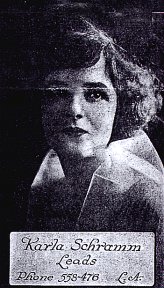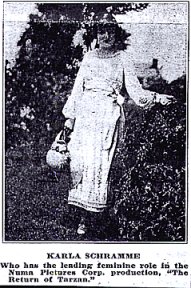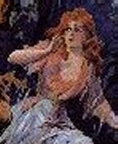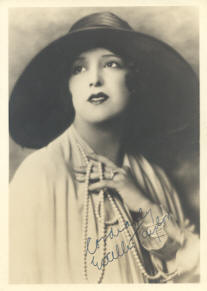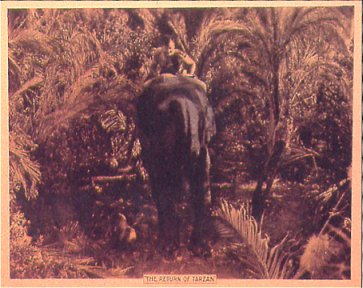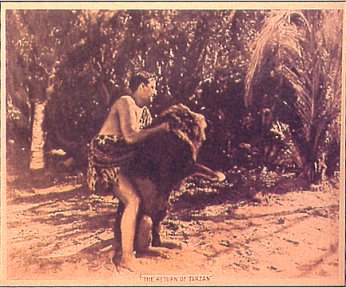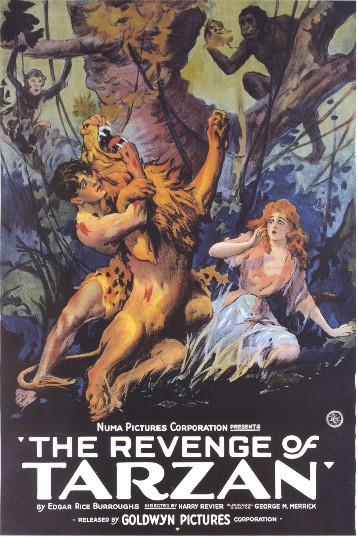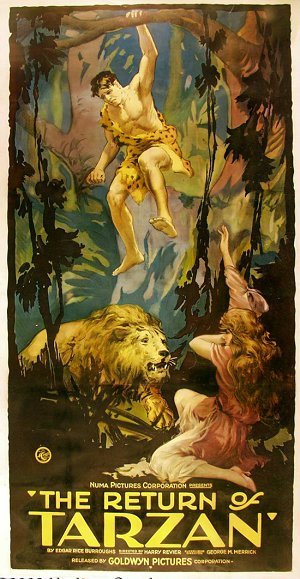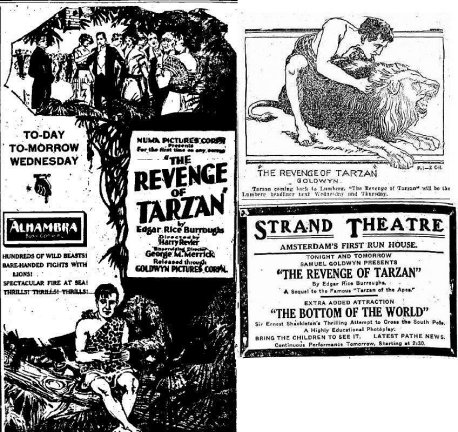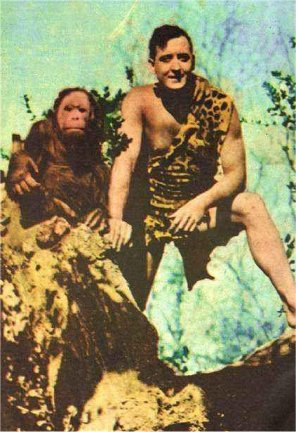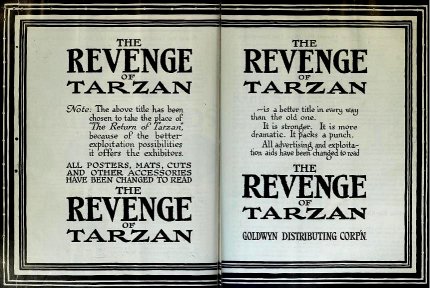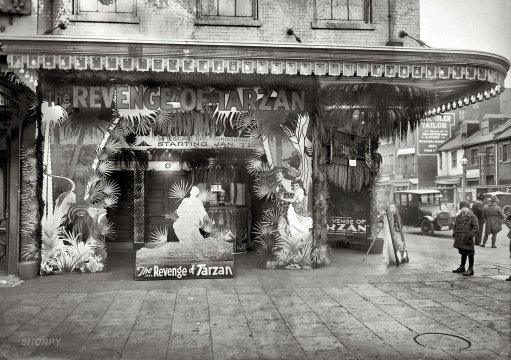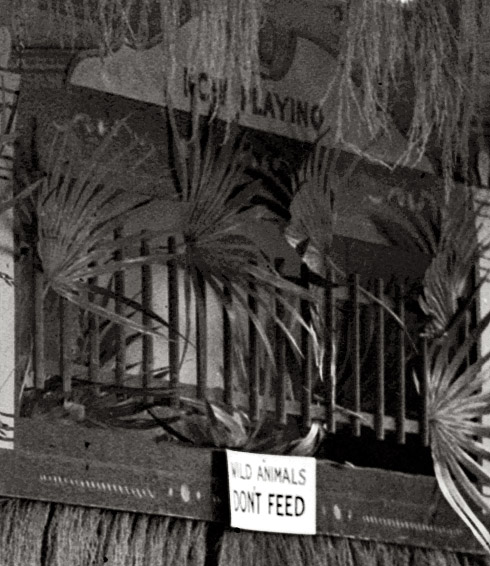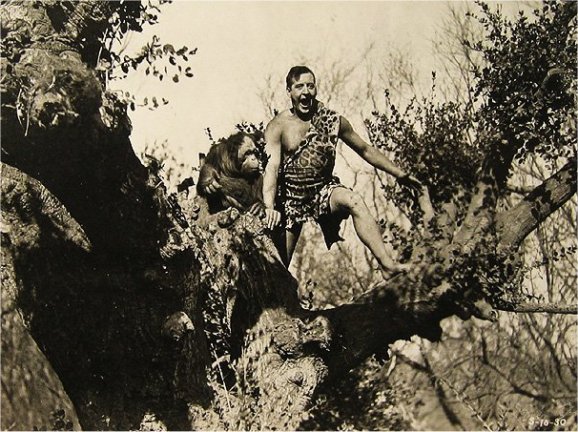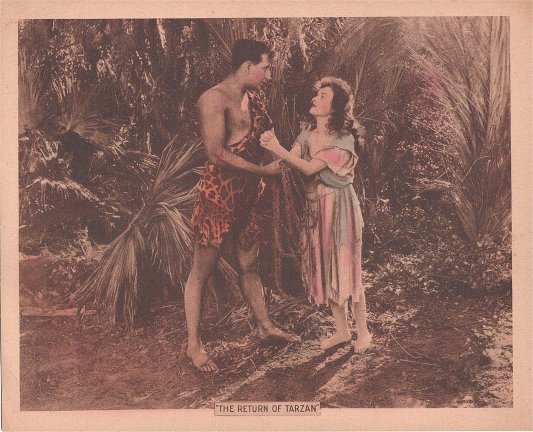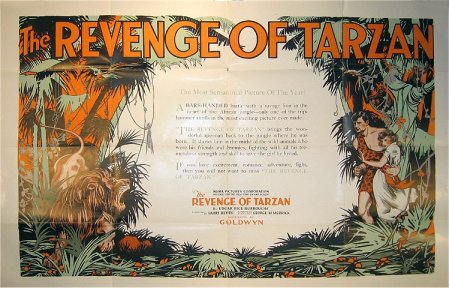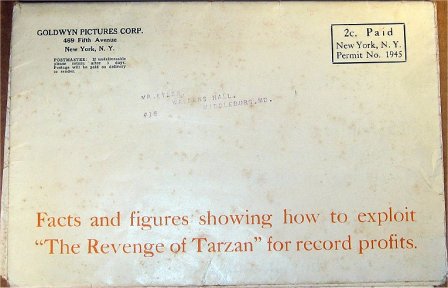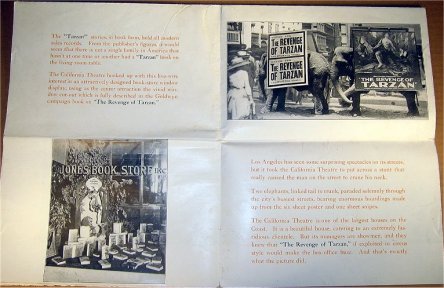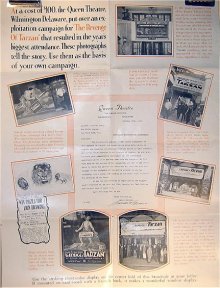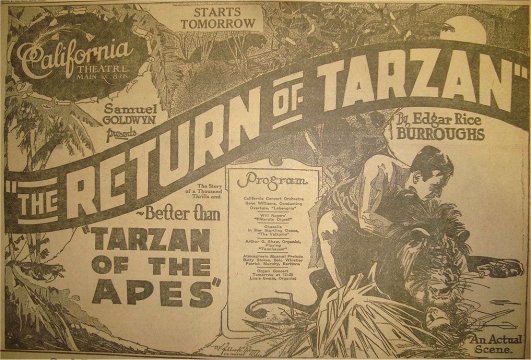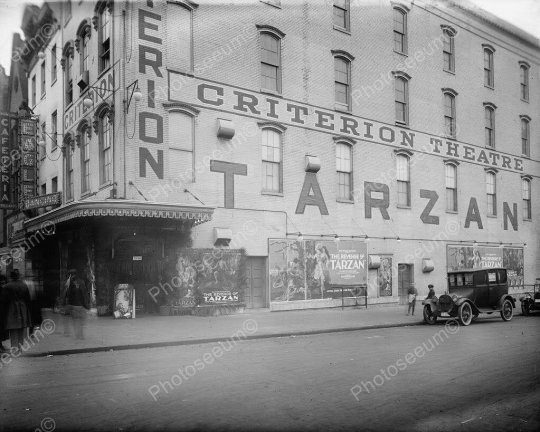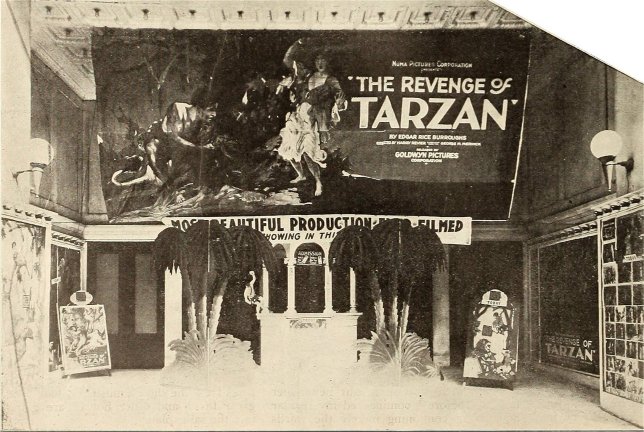After the release of The Romance of Tarzan,
Bill Parsons' option on the Tarzan property was exhausted -- in fact, Parsons
died in 1919. ERB was now free to negotiate elsewhere. Eventually
the contract was purchased by the Weiss brothers who set up a new company,
Numa Pictures Corporation, for the sole purpose of producing Tarzan films.
The Weisses had a reputation for low budget "quickies," but promised
to stick closely to the details of the Burroughs book, The Return of
Tarzan. Things looked very promising as Numa Pictures had connections
with the powerful Goldwyn Distribution company.. Disappointingly, the script
that Numa produced for The Return of Tarzan had little resemblance
to ERB's novel but Burroughs objections went unheeded.
Elmo Lincoln was now under contract to Universal Studios
so a talent search was instigated to find a new Tarzan. The winning candidate
was Joseph Pohler, a New York City fireman with no acting experience. The
6'2" and 215 pound Pollar apparently had the physique that Numa expected
of the Lord of the Jungle. Another reason for the choice was that he looked
comfortable in dress clothes than Lincoln, as much of the film would take
Tarzan from the jungle out of the jungle and back to civilization. He was
given a stage name, Gene Pollar, and was offered $100 a week plus expenses.
It is rumoured that Evelyn Fariss was hired for the role of Jane but. when
she discovered that she would have to work with actual lions, apes, and
elephants, she suddenly took ill and was hurriedly replaced by Karla Schramm.
Lincoln had caused quite a sensation in his loin cloth and bare chest but
Numa was now being pressured by new industry moral standards regarding
nudity. In response to these restrictions they designed an over-the-shoulder
animal skin to hide most of Pollar's torso, as well as leggings that covered
his thighs.
The film crew were impressed with Pollar's willingness
to tackle any dangerous action scene -- especially the scenes in the lion
enclosures. Pollar at one time had to face four lions alone and do battle
with them. He admits that nothing but his anxiety to nourish his own reputation
on the screen prevented him from turning tail when he found that one of
the lionesses had been torn from her cubs for the shooting of the
scene. Pollar later said, "It was only because I remembered that my future
with Numa was at stake that I didn't turn turtle and climb for dear life."
The screen play called for a great variety of locales:
Paris, ocean liner, Algerian desert with a camel race, jungles, and mansions.
The film locations chosen were at: New York's Yonkers studios and
a palatial home at Lakewood ~ Florida's jungle and water locales
~ California's Balboa coast, studio jungles, and Weiss Brothers' Los Angeles
Zoo. Location scenes shot on the Balboa coast included scenes on a liner,
yacht, lifeboat, and of a ship explosion and sinking. They actually made
a full-sized ship replica for this scene. When one of the lifeboats capsized
Karla Schramm and Walter Miller swam to safety but Armand Cortez almost
drowned in the rough seas and pounding surf. He was rescued when director
Harry Revier noticed his plight and sent the cameraman to his rescue. The
real-life adventure proved to be good advance publicity for the film.
Animals used in the production included L-K.O. lion star,
Vendredi, along with seven other lions, Joe Martin the orangutan, Charley
the elephant, 50 white horses, two tigers, two camels, five old mules and
several apes and gorillas.
When the film was released in 1920, another major change
was the renaming of the film to "The Revenge of Tarzan". This was in response
to Goldwyn's suggestion that something be done to counter rumours that
the film was actually just a re-release of the first Lincoln picture. The
title change was made despite the fact that trade papers had carried advertisements
using the original name and had reviewed the film under that title and
that more than forty columns of publicity had been obtained in the New
York City papers and had been carried all over the country by the Associated
Press dispatches.
Burroughs was given a special screening of the film on
March 5, 1920 at the Superba Theatre in Lose Angeles just previous to the
Numa film party returned to New York. There were about 900 people in the
audience for whom full orchestral accompaniment was provided. Burroughs
reaction was quoted in the April 3rd edition of The Moving Picture World:
"You have given my story a remarkable production and what pleases me most
is the faithfulness with which you have followed the original narrative.
I have no criticism, and am very proud to be identified with the offering."
The official release was May 30th.
The main criticism offered by audiences was of the film's
over reliance on non-jungle scenes and with the inappropriateness of Lincoln's
replacement in the lead film, although many seemed to be very impressed
with Pollar's athletic abilities. Despite these criticisms and very mixed
reviews, the film was a confirmed box office hit. The phenomenal popularity
of Tarzan guaranteed that many more of ERB's books would be adapted to
the screen.
SUMMARY
The central character in "The Return
of Tarzan" is Tarzan, the son of English gentlefoot, who, born after the
marooning of his parents in Africa, is left an orphan by their deaths and
reared to young manhood by and ape. Tarzan's chance meeting with a scientist
has resulted in his journeying to England and there establishing his right
to the title of his family.
Tarzan of the Apes (Gene Pollar) returning to France makes
the acquaintance of Count Di Coud (George Romain) and the latter's wife
(Estelle Taylor). He exposes two gamblers, Rokoff (Armand Cortez) and Polawitch
(Walter Miller), whom he catches cheating the Count at cards. Later he
throws Rokoff out of the countess's stateroom when the latter and his confederate
insult her. She begs him to say nothing of the occurrence, but does not
disclose the fact that Rokoff isher scapegrace brother, who has repeatedly
been in trouble with the law. In Paris Tarzan is lured by the two enemies
he has made into a trap, but fights his way clear. He goes on a mission
to Algiers at the request of his friend D'Arnot (Franklin B. Coates), whose
life he once saved in the jungle. At night he is thrown overboard by his
crafty foes, but swims safely to shore and lands in Arica close to his
former jungle home. Here hs assumes his old leadership temporarily among
the beasts. A yacht upon which Jane Porter (Karla Schramm), the girl he
loves sails is wrecked. She reaches the African shore with a few survivors.
Tarzan arrives on the scene just as a lion is about to devour Jane. He
kills the lion with his bare hands. The lovers are united.
~ Exhibitor's Trade Review ~ June 12, 1920

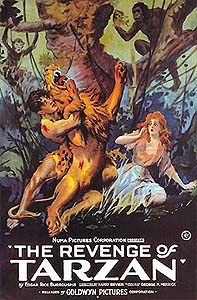
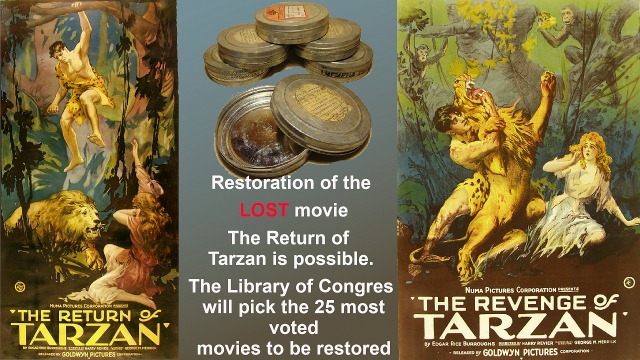
![]()
